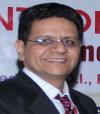Suggest Remedy For Pressure In Ears After Attending Concert

 Thu, 14 May 2015
Answered on
Thu, 14 May 2015
Answered on
 Wed, 3 Jun 2015
Last reviewed on
Wed, 3 Jun 2015
Last reviewed on
I monitor the sound of my own playing and that of the musicians I'm playing with using 'in ear monitors'. These are designed to fit snugly into my ear and provide a very effective seal against most ambient sound, meaning that I can hear what I need to hear without turning up to deafening levels... But my concern is that in this particular tour the sound enginners have (unusually, I believe) chosen to put the subs (ie. the speakers that deliver the VERY low frequencies to the arena audiencies) under the stage. In practice this means that I am now, for two hours each night, hearing/feeling a quite huge amount of very low frequency sound (from drums and bass) when playing - as no seal provided by an 'in ear monitor' is effective against these very low frequencies. After these concerts I can only describe the feeling in my ears as one of... pressure, a bit like just after a flight, actually.
My question is this: Has very low frequency sound got the potential to damage hearing? I have read differing opinions online but none from an authorative source. I'd be grateful if you could answer this. Many thanks. :)
Upload a PTA and an I/A.
Detailed Answer:
Hi,
Thank you for your query.
1. Yes, very low frequency sound has the potential to damage hearing, but it is lower than high frequency sound.
2. Very low frequency sounds usually activate the touch receptors in addition to the ears and thus the sound will also be felt as a vibration.
3. Get a baseline PTA (Pure Tone Audiometry) done and look for any symmetrical hearing loss. NIHL is usually expected in the 4 to 6 KHz range first as the ear is most susceptible in this frequency range. Usually NIHL does not affect the speech frequencies (300 - 4000 Hz). We are talking about frequencies lower than these, I presume.
4. Any Noise Induced Hearing Loss (NIHL) will vary from person to person (genetic and the specific conditions) and depends upon the duration and intensity of the sounds. Get the sound measured and if it is more than 100 dB (which is expected at a music concert), then more than 2 hours of exposure is likely to result in NIHL.
5. The reason to undergo tests is that you are feeling aural fullness which is a sign of mismatch in the hearing at various frequencies. Whether this is a TTS (Temporary Threshold Shift) at some frequencies can be assessed if you take a break for 48-72 hours.
6. If your PTA is within normal limits, it means that your ear protection is adequate and if the PTA is showing any dip in the hearing, you have to take preventive steps. These would include relocating the source, insulating the stage, adding ear protection, humming during the show (which activates the protective acoustic reflex).
7. Upload a latest PTA for further discussion. Remember to get the ears checked and also get an Impedance Audiometry (Tympanometry or I/A) if the ears are normal.
I hope that I have answered your query. If you have any more questions I will be available to answer them.
Regards.
Answered by

Get personalised answers from verified doctor in minutes across 80+ specialties



